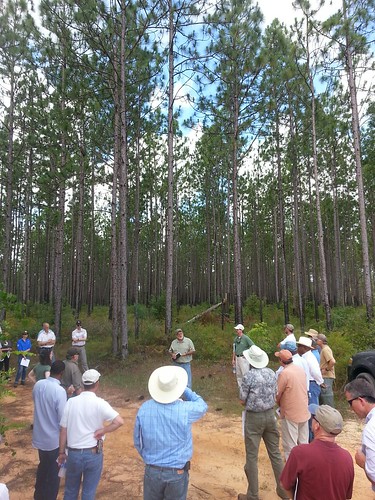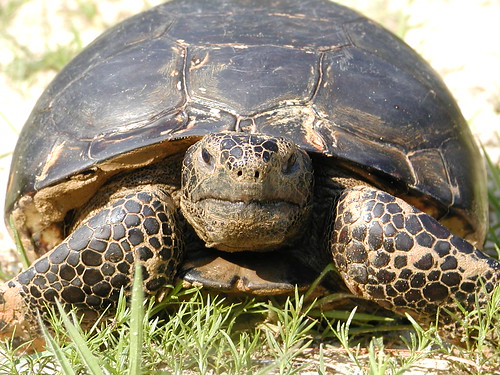
A group recently toured a RCPP project area in the Coastal Headwaters Forest. Photo by The Conservation Fund.
The Conservation Fund helps conserve and restore our American landscape, including wild areas, popular parks, working forests and more. A partner in conservation, The Conservation Fund received a $5 million grant from the Regional Conservation Partnership Program (RCPP) for the Coastal Headwaters Forest project. RCPP, administered by USDA’s Natural Resources Conservation Service, is a new program created by the U.S. Congress through the enactment of the 2014 Farm Bill. Its goal is to provide landscape-scale conservation assistance and significantly leverage partnerships and non-federal funding. The grants will be used to protect a portion of the 205,000-acre Coastal Headwaters Forest under a conservation easement during the first phase of this multi-year project. – Ciji Taylor, NRCS
Guest blog written by Ann Simonelli of The Conservation Fund
Unprecedented in size and scope, the 205,000-acre Coastal Headwaters Forest project is the largest single longleaf pine protection and restoration effort ever proposed on private lands.
Located in the Gulf Coastal Plain in western Florida and southwestern Alabama, the project will conserve and restore longleaf pine habitat, protect water quality and quantity, improve habitat for endangered and threatened species and create an innovative approach to longleaf pine protection.
This is one of 115 conservation projects currently being funded by the Regional Conservation Partnership Program (RCPP) in all 50 states and the Commonwealth of Puerto Rico. Through RCPP, NRCS and its partners will help producers install conservation practices and maintain conservation activities in selected project areas in the Coastal Headwaters Forest. Through a perpetual conservation easement, these projects will protect approximately 9,000 acres.
“RCPP encourages partners to join in efforts with producers to increase the restoration and sustainable use of soil, water, wildlife and related natural resources on regional or watershed scales,” said Russell Morgan, NRCS state conservationist in Florida.
On a recent tour of forest land enrolled in this RCPP project, NRCS, The Conservation Fund and partners met with the landowner, Resource Management Service (RMS) to discuss working together to protect and restore the forest habitat while maintaining sustainable timber operations.
“We are working to place a conservation easement on the entire property in phases to create and sustain an economically viable and healthy working forest,” explained Jimmy Bullock, senior vice president, forest sustainability for RMS. “This project ensures local communities benefit from the economic and social values of a working forest, and restores and maintains the ecological values for plants and animals inherent to the longleaf ecosystem.”
An unexpected guest, a gopher tortoise, joined the tour briefly – and rather slowly – on the way to its burrow. The tortoise, a federally threatened species, lives in dry, sandy uplands like those found on the Coastal Headwaters property. One of the primary causes of the drop in their numbers is loss of habitat, and this project will provide significant protection for the species.
Later in the tour as the group was discussing the forest and the species it supports, a military helicopter was heard flying over, likely from nearby Naval Air Station Whiting Field or Eglin Air Force Base. Maintaining this expansive area as a working forest will provide potential training opportunities and long-term certainty and planning ability for the Department of Defense and its local military installations that have flight paths over the property.
“This project is truly the right acres in the right place at the right time,” said Andrew Schock of The Conservation Fund. “Together we can revive hearty, longleaf pine habitat here and secure its presence and benefits, both ecologically and economically, for generations to come.”

The federally threatened gopher tortoise lives on the dry, sandy habitats found in Coastal Headwaters Forest. Photo by Randy Browning, USFWS.
No comments:
Post a Comment